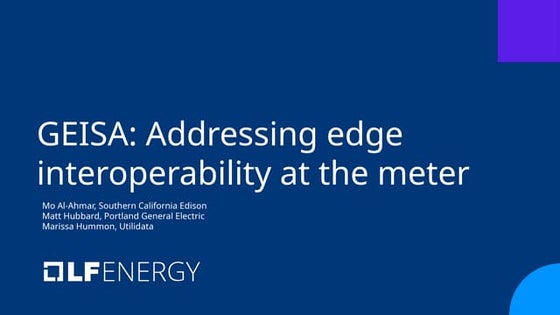Embracing Localization Inaccuracy - A Case Study
In recent years, indoor localization has become a hot research topic with some sophisticated solutions reaching accuracy on the order of ten centimeters. While certain classes of applications can justify the corresponding costs that come with these solutions, a wealth of applications have requirements that can be met at much lower cost by accepting lower accuracy. This paper explores one specific application for monitoring patients in a nursing home, showing that sufficient accuracy can be achieved with a carefully designed deployment of low-cost wireless sensor network nodes in combination with a simple RSSI-based localization technique. Notably our solution uses a single radio sample per period, a number that is much lower than similar approaches. This greatly eases the power burden of the nodes, resulting in a significant lifetime increase. This paper evaluates a concrete deployment from summer 2012 composed of fixed anchor motes throughout one floor of a nursing home and mobile units carried by patients. We show how two localization algorithms perform and demonstrate a clear improvement by following a set of simple guidelines to tune the anchor node placement. We show both quantitatively and qualitatively that the results meet the functional and non-functional system requirements.





















Recommended


























































More Related Content
Similar to Embracing Localization Inaccuracy - A Case Study (20)








































Recently uploaded (20)










































Embracing Localization Inaccuracy - A Case Study
- 1. Embracing Localization Inaccuracy: A Case Study Usman Raza Amy L. Murphy Gian Pietro Picco 1
- 2. Motivation ? Localization in wireless sensor networks has been studied for a decade now ? Increasing complex localization techniques to achieve tens of cm accuracy ? Use costly specialized hardware (UWB, Antenna arrays) ? Experiences from the real environments are still limited! 2
- 3. Goals of This Work ? Not to propose yet another localization technique ? Evaluate localization techniques in a real-world nursing home ? Requirement are representative of diverse localization systems ? Unveil the relationship between system level performance and application level objectives ? What a WSN geek want? vs. What an end user want? ? To give guidelines to improve both the system level performance and end user satisfaction 3
- 4. Higher quality of life for impaired and elderly in nursing homes Monitoring to the medical support staff A single floor of a nursing home in Trento, Italy 4 ? 10 Public spaces, 20 Patients, 4 Nurses
- 5. Monitoring in Nursing Homes - Services ? Doctors ? Offline evaluation of patient movement ? To assess the general health of the patient ? To diagnose the progression of Alzheimer's disease ? Nurses ? Real time use of approximate patient location ? To find the patient ? To raise an alarm if patient leaves the facility 5
- 6. WSN Localization - Architecture Mobile Anchors(x,y) Proximity Detection Localization Technique 6 Localization
- 7. WSN Localization - Architecture Mobile Anchors(x,y) Proximity Detection Localization Technique 7 Localization
- 8. WSN Localization - Architecture Mobile Anchors(x,y) (x,y) (x,y) (x,y) Proximity Detection Localization Technique 8 Localization
- 9. WSN Localization - Architecture Mobile Anchors(x,y) (x,y) (x,y) (x,y) Proximity Detection Localization Technique Mobile(x,y) 9 Localization Visualization
- 10. WSN Localization - Architecture Mobile Anchors(x,y) WSN geek ¨C How far is the Nurse ¨C Does the visualization allows estimate to the actual position? me to find the patient? (x,y) (x,y) (x,y) Proximity Detection Localization Technique Mobile(x,y) 10 Localization Visualization
- 11. Localization Localization Technique Step 1¨C Proximity Detection ? System Design ? Objective ? A custom proximity detection ? Identify the proximity of the mobile protocol patient to an anchor Anchor Sleep Box-MAC-LPL ? Requirement ¨C Low maintenance ? Energy Efficiency Mobile Sleep Sleep Visualization Refresh Interval Lifetime Anchors - 45 days (2 AA batteries) 11 Mobile - 5 days (1 coin battery)
- 12. Localization Proximity Detection Step 2¨C Localization Techniques ? Max-RSSI Localization ? Localizes patient at the anchor detecting proximity with maximum signal strength Patient 12
- 13. Localization Proximity Detection Step 2¨C Localization Techniques ? Max-RSSI Localization ? Localizes patient at the anchor detecting proximity with maximum signal strength ? Relative Span Exponential Weighted Localization (REWL) ? Localizes patient at weighted centroid of all anchor coordinates Patient 13
- 14. Experimental Evaluation ? System level: WSN geekˇŻs perspective ? Accuracy: Percentage of time the patient is correctly detected in its current area/room ? Application level: Nurse's Perspective ? Satisfaction level : moderate, fair, excellent! 14
- 15. System Level Evaluation - Accuracy Bedroom 94% 87% 77% 89% 92% 72% Max-RSSI 89% 82% Corridor 85% Bathroom - Reasonable accuracy Living Area Living Area - No clear winner - REWL outperforms in Bedroom 95% key areas e.g. living and exit areas REWL 78% 72% 97% 91% 60% 91% 95% Corridor 88% Bathroom 15 Living Area Living Area
- 16. Application Level Evaluation - Methodology ? Operator was asked to evaluate multiple localization and visualizations ? Find the patient ? Raise an alarm Patient Icon Patient Tracking GUI Nurse 16
- 17. Application Level Evaluation - Results Max RSSI - at anchor Max RSSI- at room center REWL - at x,y Moderate Fair Excellent! Quality of localization system depends heavily on the 17 visualization
- 18. Application Level Evaluation - Results ? Experience with our Initial deployment: ? Low accuracy ? Positive qualitative evaluation Bedroom 65% 52% 84% 79% 57% REWL 34% 72% Corridor 91% Bathroom Living Area Living Area Low Accuracy ˇŮ Unacceptable solution to end user 18
- 19. Guidelines for Anchor Placement ? Principle: Minimize the likelihood of signal reception across the monitored areas Maximize the distance between anchor nodes deployed in the adjacent Use the radio shieling of areas obstacle to your advantage! Place the nodes near the center of the monitored area 19
- 20. Conclusion ? Simple low cost localization system is enough for many applications ? Low accuracy can still be acceptable to end user 20
- 21. Thank You! Usman Raza, Amy Murphy, Gian Pietro Picco, ˇ°Embracing Localization Inaccuracy ¨C A Case Study ˇ±, April 2013, IEEE International Conference on Intelligent Sensors, Sensor Networks and Information Processing (ISSNIP), Melbourne, Australia Full Text (Pre-print) : http://disi.unitn.it/~raza/Papers/DISI_TR_12_038.pdf 21

